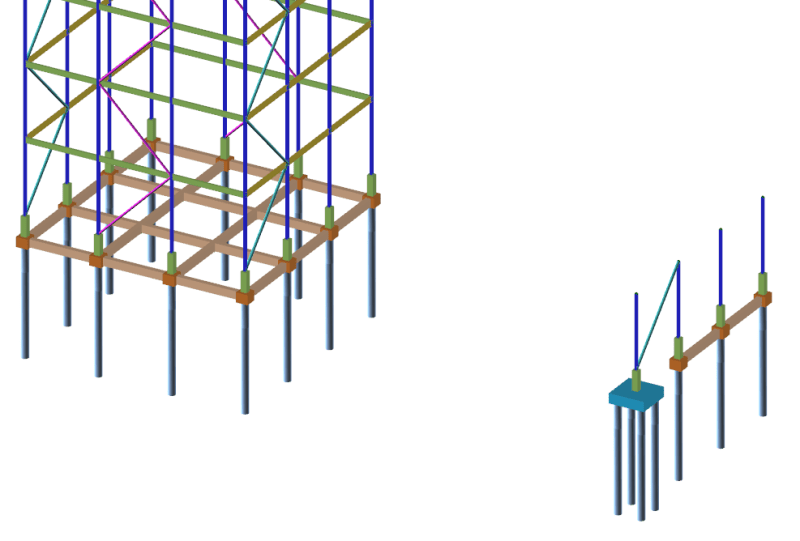I haven't been able to find much literature for design of piles and tie beams.
In context, looking at supporting a tall braced steel structure, on soft ground.
(1) What's your opinion for principal reason for tie beams.
(2) For lateral load to be taken to ground, is it more common to have a group of piles at brace node (right sketch) or shed load into other piles via the tie beam (left sketch).
(3) For a tall structure on soft ground, is your opinion that pile foundation with tie beams is appropriate. Or a raft foundation.
Most of the literature seems to be for heavily loaded pilecaps, supporting a single column, using a thick pilecap which distributes load to all piles in the group.
There isn't much information for lateral load transfer using tie beams or for that mater a single thick slab tied into all piles.

In context, looking at supporting a tall braced steel structure, on soft ground.
(1) What's your opinion for principal reason for tie beams.
(2) For lateral load to be taken to ground, is it more common to have a group of piles at brace node (right sketch) or shed load into other piles via the tie beam (left sketch).
(3) For a tall structure on soft ground, is your opinion that pile foundation with tie beams is appropriate. Or a raft foundation.
Most of the literature seems to be for heavily loaded pilecaps, supporting a single column, using a thick pilecap which distributes load to all piles in the group.
There isn't much information for lateral load transfer using tie beams or for that mater a single thick slab tied into all piles.

